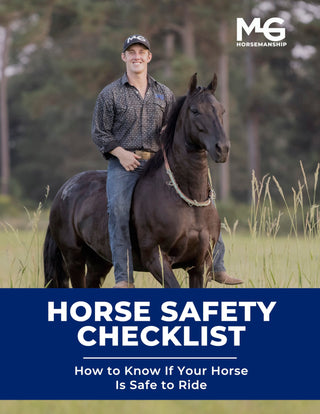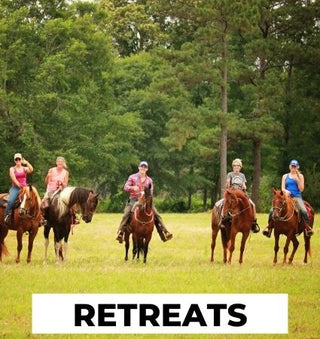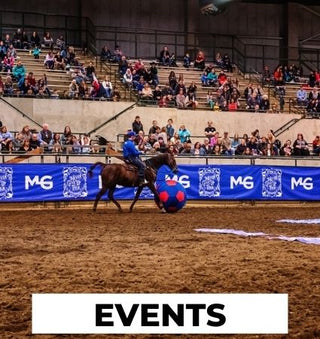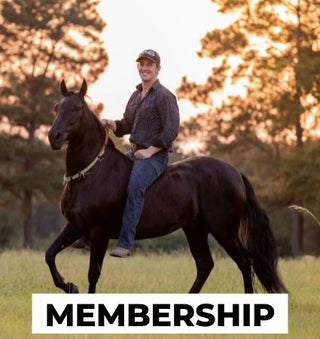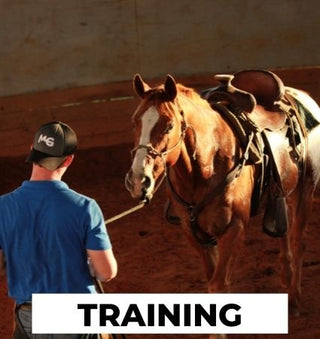Training Tips
Today, we'll talk about the importance of maintaining personal space and respect when handling horses, and how these small details can significantly impact both your safety and the effectiveness of your training.
Understanding Your "Bubble" and Horse Respect
When working with horses, it's crucial to establish boundaries and maintain control. One of the key concepts to remember is your "bubble," which is your personal space that the horse should not enter unless you invite them in. You must teach the horse to back up or move away without touching them physically. This shows that the horse respects you and recognizes your authority.
Practical Tips:
- When backing up your horse, stay outside your bubble. If the horse spooks or reacts, there is a safer distance between you and them.
- Use clear and consistent body language to communicate with your horse, ensuring they understand that your space is off-limits unless you invite them in.
The Importance of Leading with Purpose
Leading a horse might seem like a simple task, but it is often overlooked in terms of technique and intention. Most people lead their horses without considering whether the horse is truly paying attention. To improve this, you need to make your movements less predictable.
Strategies for Effective Leading:
- Change directions and stop randomly to keep the horse attentive and engaged.
- Make sure your horse is always focused on you, ready to follow your every move.
Establishing Leadership and Control from the Ground
Before you can successfully ride a horse, it's essential to establish leadership from the ground. If your horse is distracted or not paying attention while circling around you, this is a clear indication that they may not be ready to be ridden.
Exercises to Build Ground Control:
- Ask your horse to circle around you while maintaining eye contact and focus.
- Correct your horse gently if they try to step into your space or look away from you.
- Practice moving the horse's face, shoulders, and hindquarters with light pressure to establish control.
Facing Fears: Desensitization Techniques
Desensitizing your horse to common fears is a fundamental part of training. Horses are naturally skittish animals, so exposing them to scary or unfamiliar objects in a controlled environment is vital.
Desensitization in Action:
- Always keep a "scary" object, like a flag or tarp, between you and the horse while moving it around them.
- Pay attention to your horse’s reactions and remain calm to reassure them.
- If the horse reacts, keep the object in their sight but stay out of their space, allowing them to get accustomed to it.
Handling Sudden Reactions and Maintaining Safety
Accidents can happen when horses react suddenly to unexpected stimuli. Understanding how to handle such reactions can prevent injury to both the horse and handler.
Safety Measures:
- Maintain a safe distance from your horse when leading them, so they do not step on you if they spook.
- Use long lead ropes to give yourself space and control.
- Always pay attention to your horse's body language and be ready to react to any sudden movement.
The Path to Confidence: Continuous Learning and Adaptation
Confidence in handling and riding a horse comes from understanding their behavior and practicing regularly. The more time you spend working on the ground with your horse, the more comfortable and confident you will be when riding.
Key Takeaways:
- Understand your own limits and adapt your training methods accordingly.
- Use your experience and intuition to make decisions about what exercises to do with your horse.
- Recognize that each horse is different and requires a tailored approach to training.
Conclusion: Building a Strong Partnership
Horsemanship is not just about riding—it's about building a relationship based on mutual respect and understanding. By applying these principles, you create a safe and enjoyable experience for both you and your horse. Remember, the journey to becoming a skilled horse handler takes patience, practice, and a commitment to learning.
Get the training and support you need—join the Horse Help Challenge now HERE!


